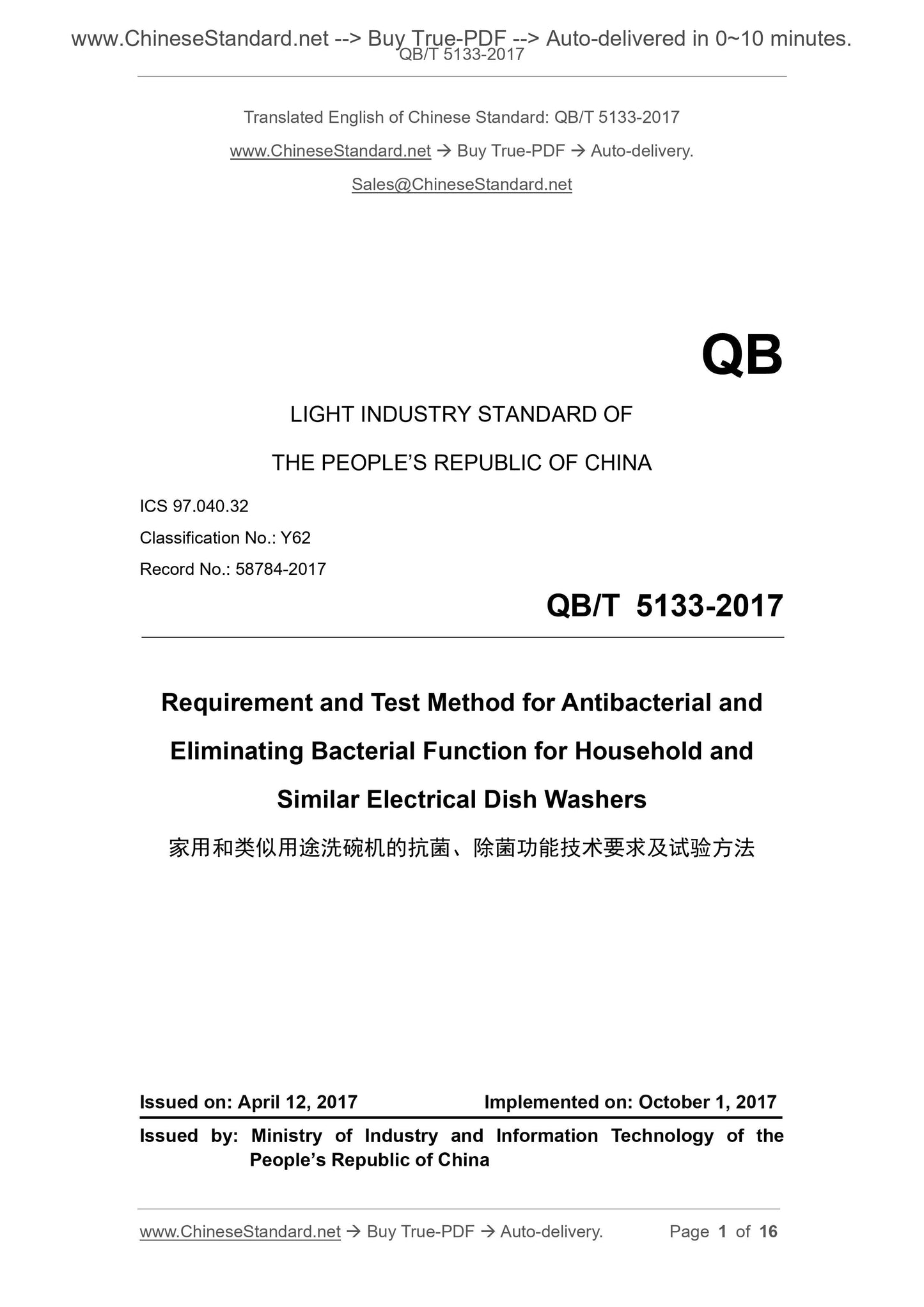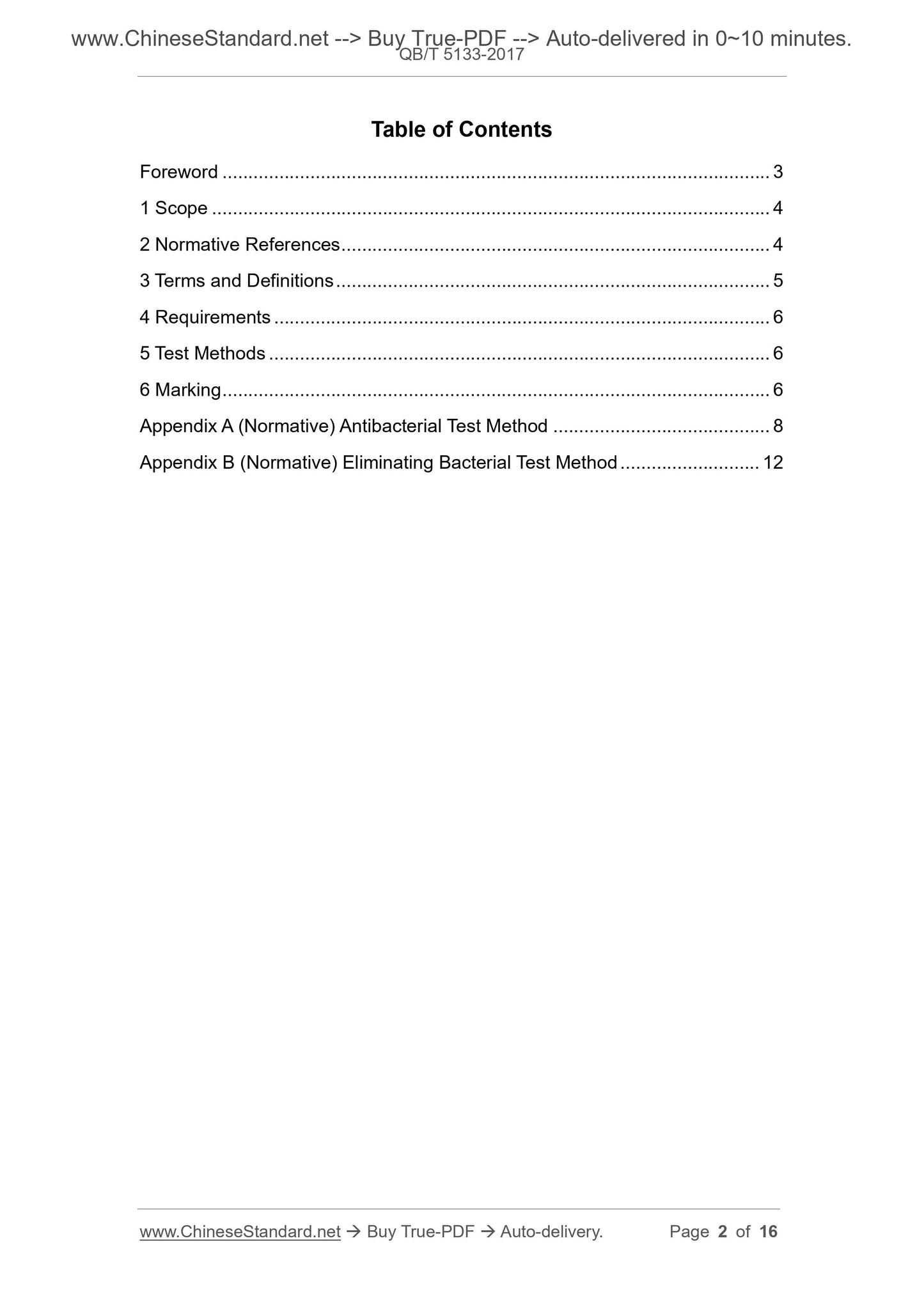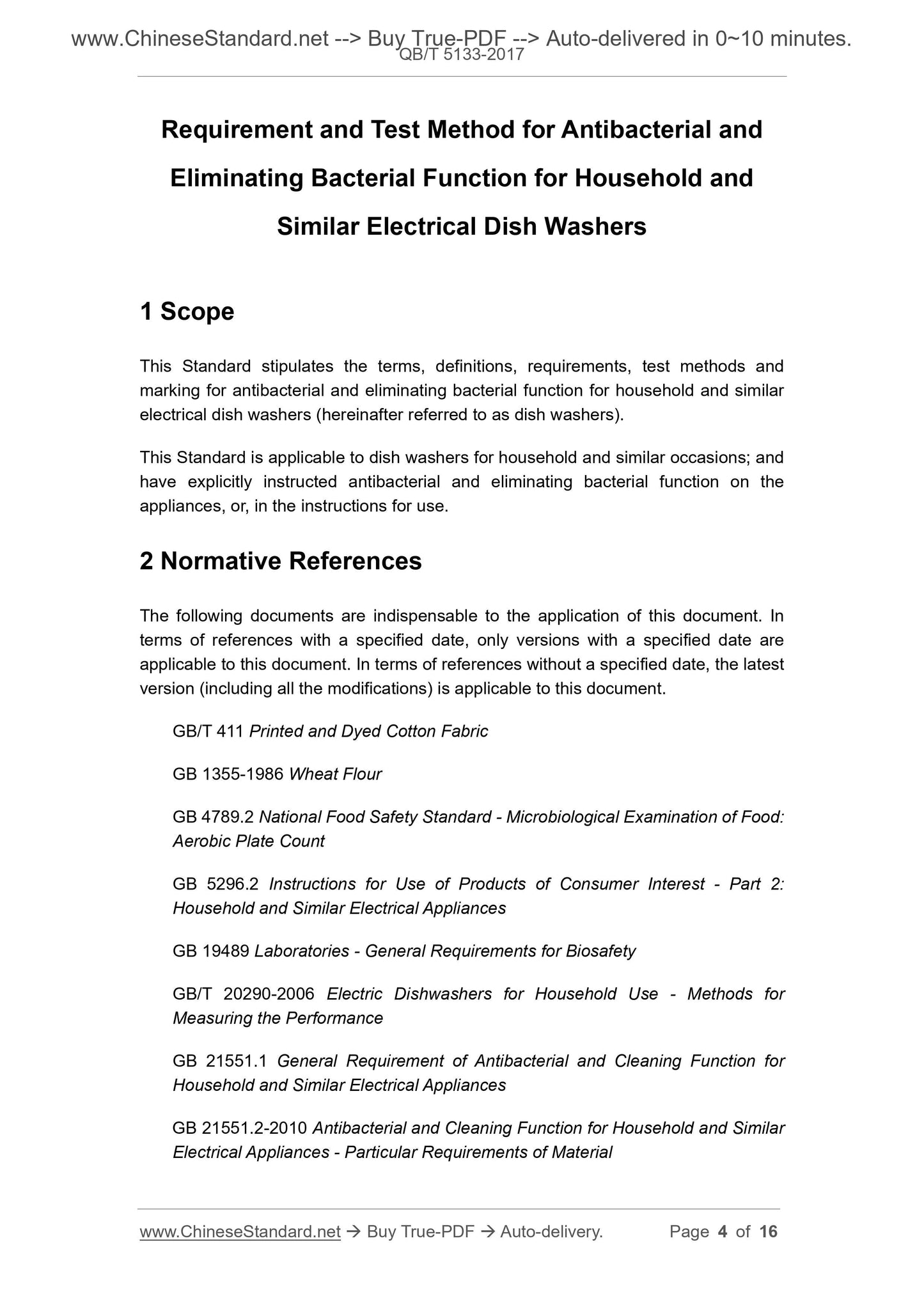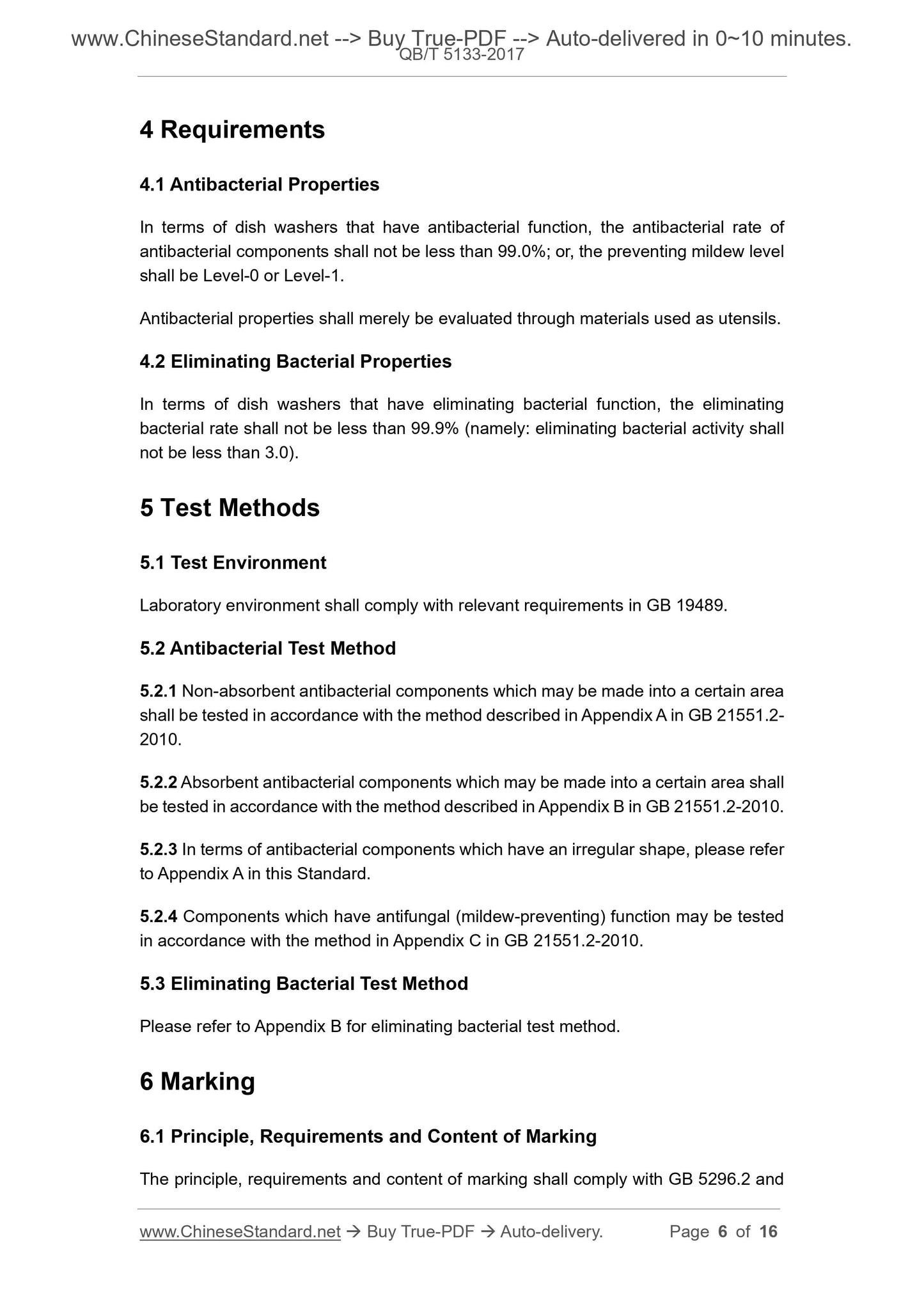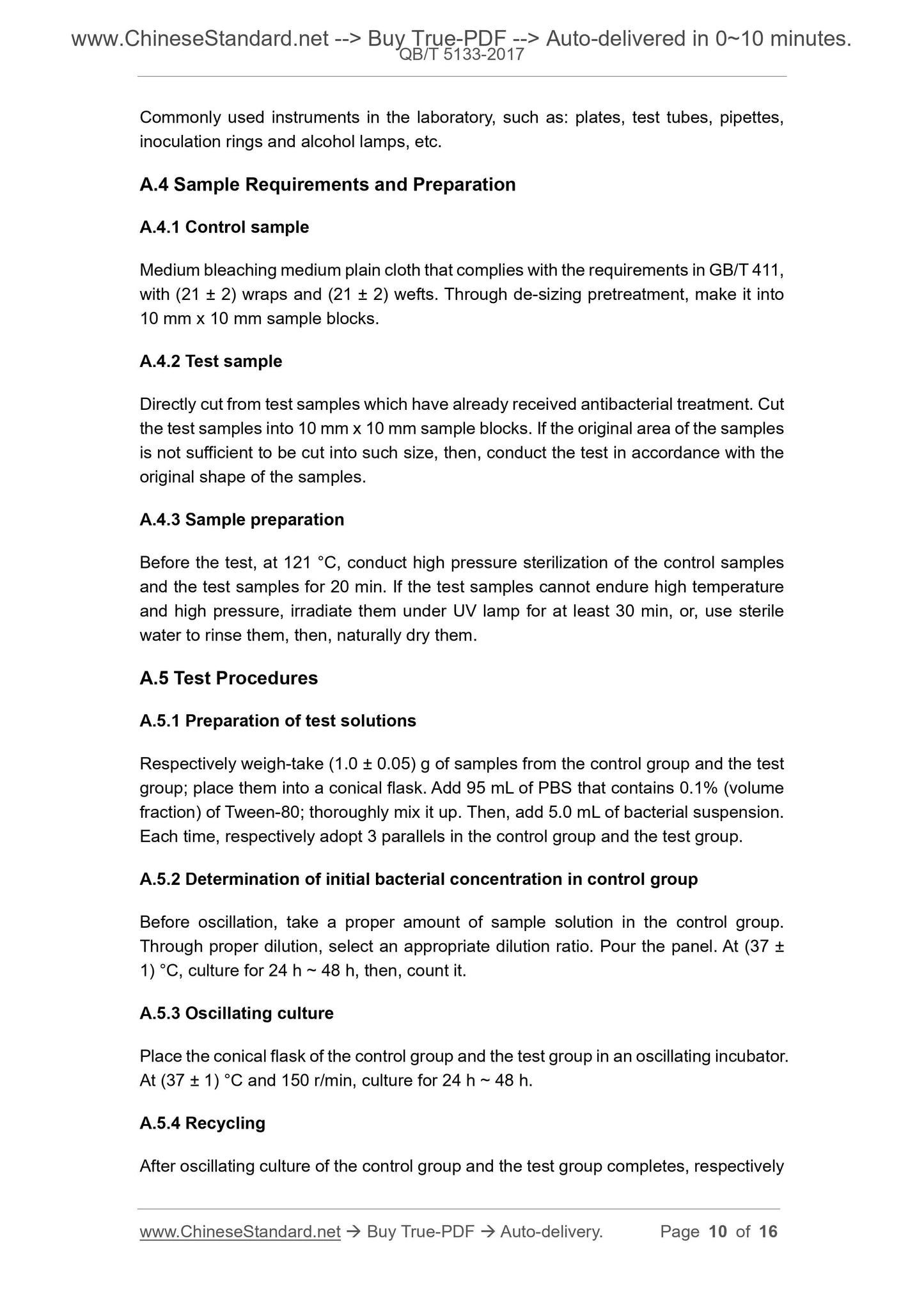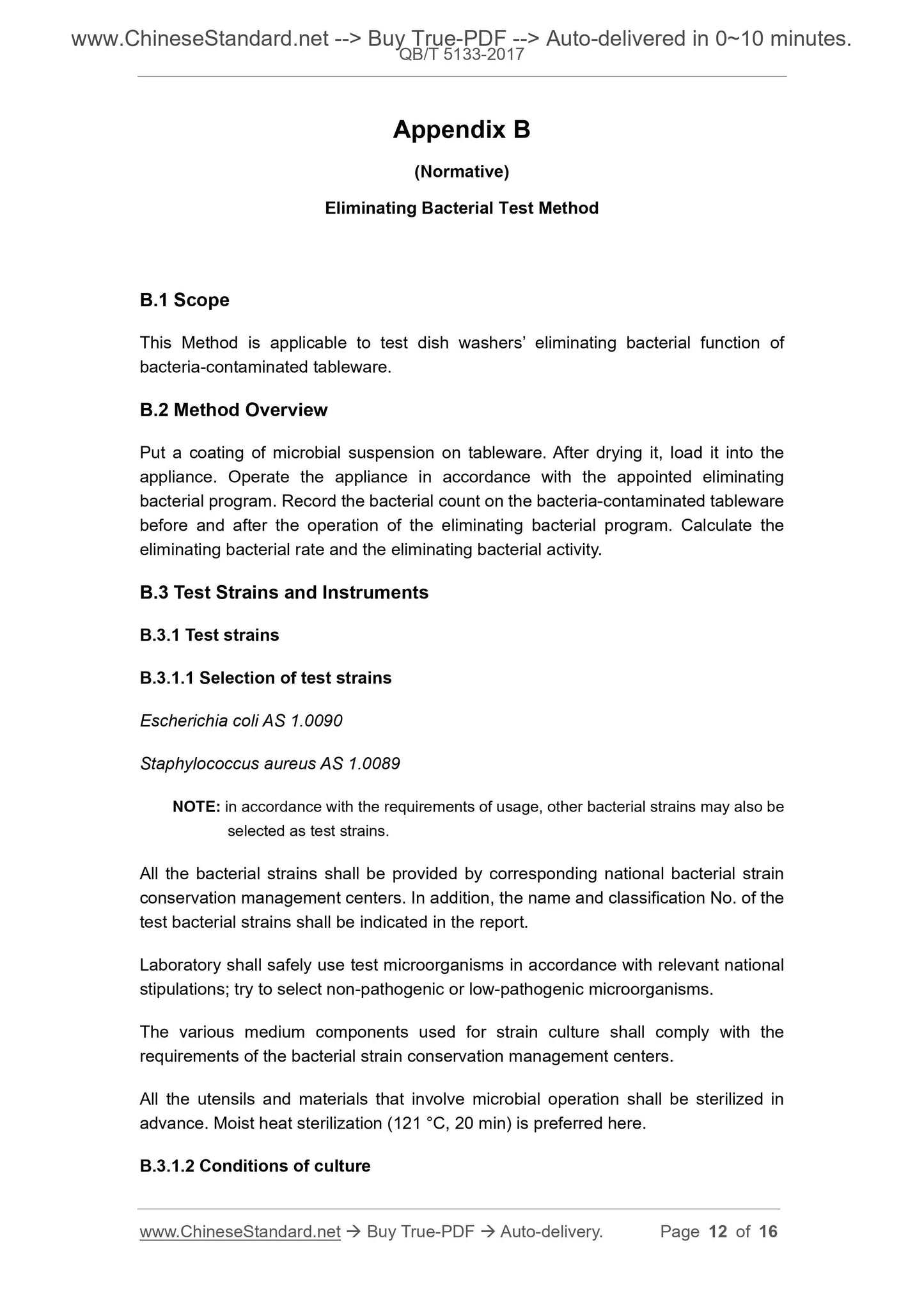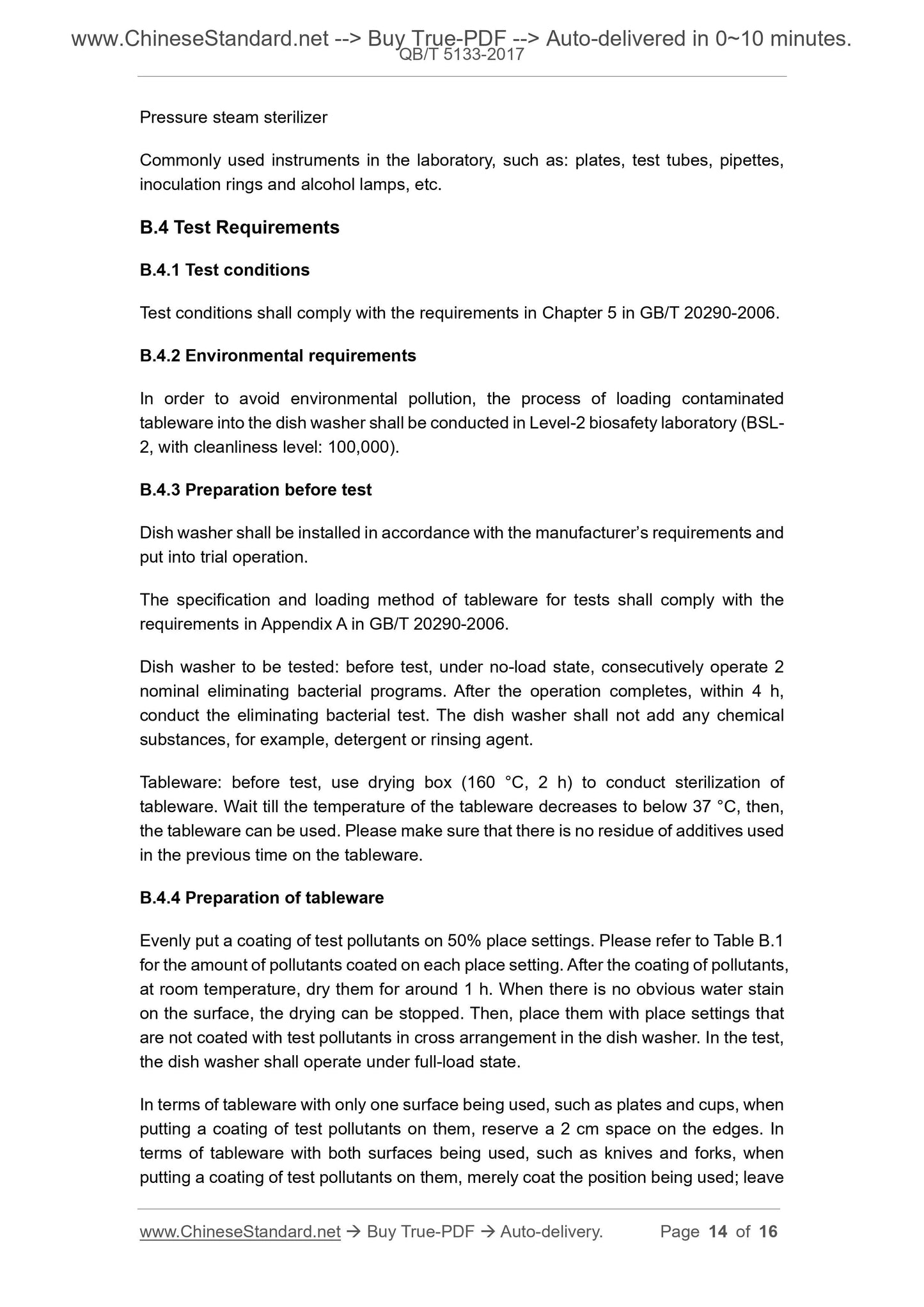1
/
of
8
www.ChineseStandard.us -- Field Test Asia Pte. Ltd.
QB/T 5133-2017 English PDF (QB/T5133-2017)
QB/T 5133-2017 English PDF (QB/T5133-2017)
Regular price
$135.00
Regular price
Sale price
$135.00
Unit price
/
per
Shipping calculated at checkout.
Couldn't load pickup availability
QB/T 5133-2017: Requirement and Test Method for Antibacterial and Eliminating Bacterial Function for Household and Similar Electrical Dish Washers
Delivery: 9 seconds. Download (and Email) true-PDF + Invoice.Get Quotation: Click QB/T 5133-2017 (Self-service in 1-minute)
Newer / historical versions: QB/T 5133-2017
Preview True-PDF
Scope
This Standard stipulates the terms, definitions, requirements, test methods andmarking for antibacterial and eliminating bacterial function for household and similar
electrical dish washers (hereinafter referred to as dish washers).
This Standard is applicable to dish washers for household and similar occasions; and
have explicitly instructed antibacterial and eliminating bacterial function on the
appliances, or, in the instructions for use.
Basic Data
| Standard ID | QB/T 5133-2017 (QB/T5133-2017) |
| Description (Translated English) | Requirement and Test Method for Antibacterial and Eliminating Bacterial Function for Household and Similar Electrical Dish Washers |
| Sector / Industry | Light Industry Standard (Recommended) |
| Classification of Chinese Standard | Y62 |
| Classification of International Standard | 97.040.32 |
| Word Count Estimation | 10,157 |
| Date of Issue | 2017-04-12 |
| Date of Implementation | 2017-10-01 |
| Quoted Standard | GB/T 411; GB 1355-1986; GB 4789.2; GB 5296.2; GB 19489; GB/T 20290-2006; GB 21551.1; GB 21551.2-2010 |
| Regulation (derived from) | Ministry of Industry and Information Technology Bulletin 2017 No. 14; Industry Standard Filing Announcement 2017 No. 7 (Total No. 211) |
| Issuing agency(ies) | Ministry of Industry and Information Technology |
| Summary | This standard specifies the terms and definitions, requirements, test methods and signs for antibacterial and sterilization of household and similar electric dishwashers (hereinafter referred to as dishwashers). This standard applies to the appliance or its instructions for use with antibacterial, germicidal function, at home and similar occasions to use the dishwasher. |
Share
